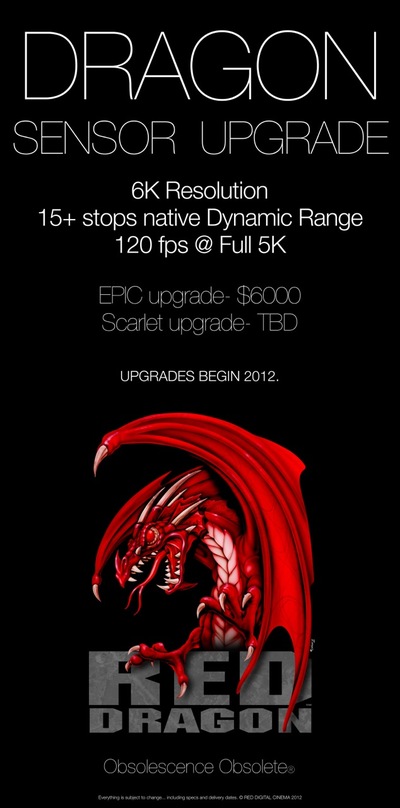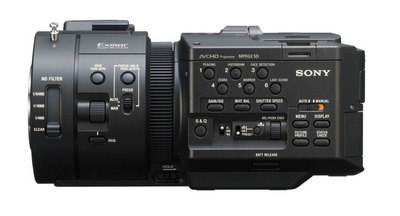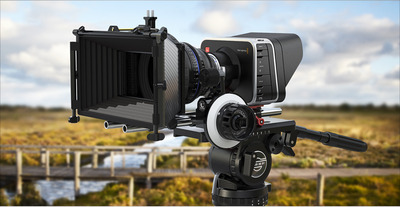It's Raining Cameras
 Thursday, April 19, 2012 at 12:23AM
Thursday, April 19, 2012 at 12:23AM Last year, I went to NAB for the first time. After a couple of years of watching my social media contacts having a much better time than me I decided I would join them. It was a great trip and it was great to meet everyone. If there was a disappointment for me, it was that NAB2011 was more notable for the cameras that were not released than it was for those that were.
This year, I was not able to make the show so Murphy’s Law has kicked and we have loads of new large sensor cameras making their NAB debut. Many of these are not brand new at NAB but there is a distinct flavour to the latest announcements. There is no doubt that the early buzz was all around 4K. This prompted a veritable twitter frenzy about whether you needed 4K. I have covered this ground before in so I will move on to the cameras themselves.
First up is Canon. Despite recently having given us the C300 and the 5D Mk3, Canon still had some new toys to tempt us with.
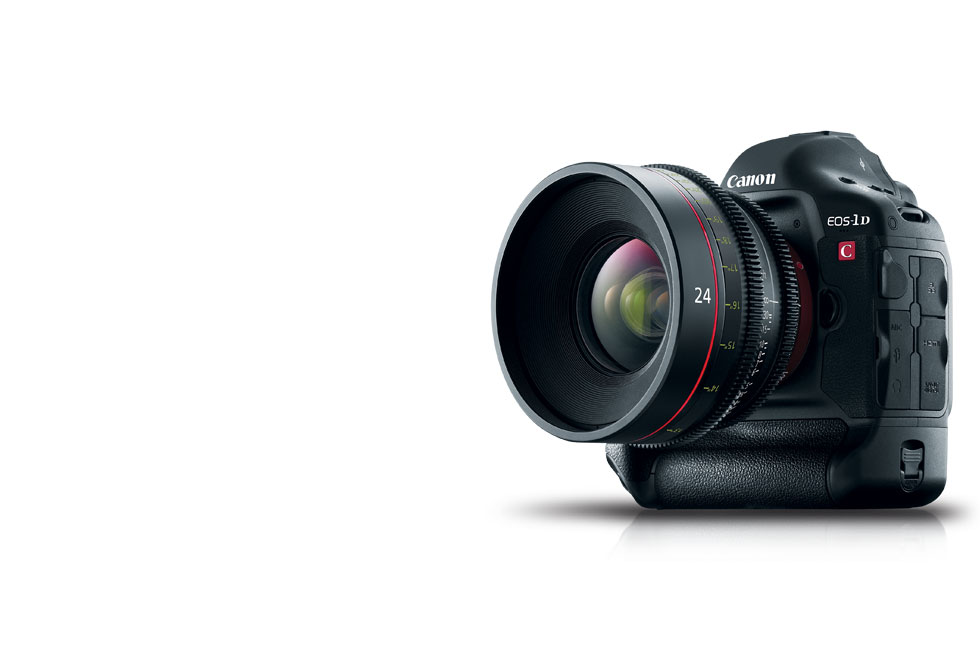
The more expected of these two is the Canon 1DC as Canon teased it at the C300 launch. Unlike the C300 this is a proper convergence device. As a stills camera it has the same spec as the 1DX which means it is a full frame, professional grade DSLR. As a video camera it has some significant upgrades over the 1DX. The most significant and its ticket to the NAB in-crowd is a 4K capability. This is recorded to the CF card in good ole MJPEG at 24p. This is an odd choice and I am guessing that what we are really getting is an image sequence rather than a movie file. Its more like the stills shooting being sped up to 24fps rather than the movie resolution being doubled. It is also the first Canon DSLR with a clean full HD resolution video out (8bit 4:2:2). HD recording has the same codec options and speeds as the 1DX/5D3 but adds 1080p50/60. Canon has also added Canon Log Gamma. UK pricing is a slightly speculative £10,000 inc VAT which would make it twice the cost of the (now very delayed) 1DX. There is no doubt that it is the king of DSLR convergence as it out features everything in a DSLR shell. No lesser man than Shane Hurlbut did the demo shoot for NAB and the twitter consensus was it looked great on the big screen. Personally, I am just wondering who it is for. By 4K standards it is not particularly expensive but unless you need 4K you can have a couple of D4s or four D800s with only a small drop in feature set. More significantly, you can also have the much more shooter friendly C300. If you do want 4K, it is significant that the recording is onboard. With cameras like the FS700 we don’t know when 4K recording will come or how much it will be. The 1DC is 4K out of the box but you have just that one way of getting it. Its also worth noting that the eurotweeters were unhappy about the lack of 25p. You lose many of the current advantages of 4K if you can’t downscale to HD easily.
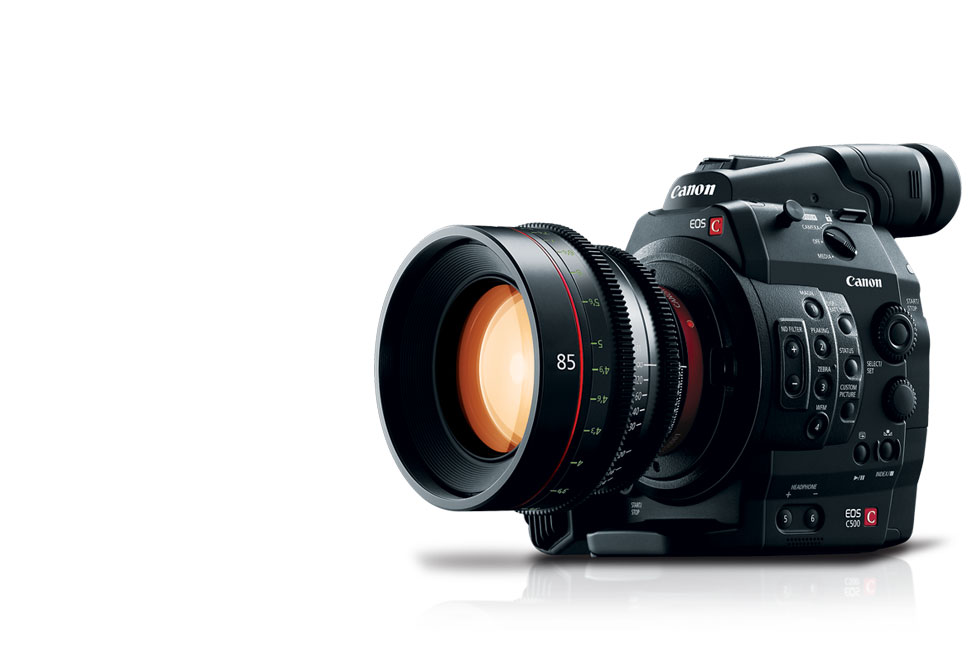
Canon’s second camera is a big brother for the C300 - the C500. Back on their shared birthday, the RED crowd mocked the C300 for being “only HD” and lacking RAW or high 1080p frame rates. The C500 is here to kick sand back in the face of RED for only twice as much money as the C300. OK, maybe that loses some of the impact. Since its launch, the C300 has built a enthusiastic following. Its picture quality and ease of use have given it a kind of baby Alexa reputation. The C500 takes the same sensor but significantly beefs up the picture processing to give 4K out and is the first implementation of Canons own RAW format. Speed has also been enhanced to up to 120fps. I know that Canon has been working with Codex on a recorder. Codex is the Rolls Royce option for external recorders (the worked with Arri too) with all that implies. This is the first major manufacturer to venture into RED Epic territory, although technically its probably more of a baby Sony F65. Its taken years for the industry to be get up to speed on RED’s RAW workflow. How will Canon fare?
RED haven’t produced a new camera for NAB, the Scarlet is making its NAB debut but the real news is about a new sensor called RED Dragon. This is the fulfillment of REDs main theme for NAB2011. Its not a new camera but a new sensor which is inline with RED’s commitment to modularity and upgradability. Resolution is up to an unprecedented 6K. This may seem excessive given the debate about 4K but logically some of the advantages 4K acquisition has for HD delivery pass on up the line once you hit 4K delivery. Of more immediate use is improved low light performance and dynamic range (without HDRX). The cost for an Epic is expected to be around £4000 which is not exactly cheap but is a lot less than, say, trading in your C300 to get a C500. Availability can be REDs achilles heel and the upgrade process won’t kick off till October. Scarlet owner have an upgrade path too but they will have to wait longer which will give them more time to save. Scarlet will be dearer because you effectively have to swap in Epic parts to get to Dragon. Note that this is not the long awaited Monstro chip. It is a touch bigger than the Epic but it is not yet full frame.
Sony’s only new large format camera is the FS700 I talked about recently. The F65 was at NAB2011 last year if only in concept form. Am I still enthusiastic about this camera now its in the context of all its piers? I think the answer to that is yes. It still represents what passes for value for money in the pro video market. The upgrades from the FS100 are worthwhile and, in the case of the high speed, innovative. It’s not upgradeable in the RED sense but the 4K 12bit RAW out shows some potential. I just can’t think of many projects you might want to shoot that you couldn’t with the FS700. I think Sony predicted the FS700 launch would get lost in the noise at NAB and launching before was a smart move.
Canon may have thought that launching 2 cameras would guarantee them the show buzz and for about 24 hours they were right. Then the Aliens landed!
Video processing specialist turned software guys Blackmagic Design lived up to their name and made Canon’s buzz disappear and reappear at their own stand. Blackmagic’s last trick was to make the cost of getting hold of the feature film class grading software Resolve they acquired first shrink from $100,000 first to $1000 and then disappear entirely. OK, that is a slight over-simplification but it shows they know have to think outside-the-box and drive value. Blackmagic debuted some Thunderbolt connected SSD recorders last year at an attractive price. This year they decided that as they do processing, recording and software all they really needed to do was find I nice sensor and they could make a camera - so they did. What they have come up with is the most blue sky thinking camera I have seen. Its a camera designed to be as filmic as possible. It is not a convergence device, its not going to replace your 5D in that regard. It has a Johnny Ive-like singularity of purpose. They knew their customers wanted a camera with excellent grading capability and wide dynamic range (13 stops). This meant shooting RAW. Rather than go proprietory as the majors have they used the open CinemaDNG format. It shoots at 2.5k and 12bit which gives scope for cropping but you can also shoot HD in ProRes (Apple) or DNxHD (Avid) formats. As befits the makers of Resolve, your Colourist will love you for shooting on this. To cope with all this data the camera has an integrated SSD slot. Again this is just a standard 2.5” SATA drive you can buy down at PC World. To get the data into your NLE or Resolve you can just pop the drive in an enclosure or use the integrated Thunderbolt port. This can also be used to connect your laptop to use the Ultrascope monitoring package that is bundled along with a full copy of Resolve (over £1000 value). For more traditional forms of monitoring and audio there is SDI out and 1/4 jacks. To top it off is a high res touch screen monitor with an iOS-like interface that should make the designers of the major’s menu interfaces hide in shame. So here we have a piece of gear with a hat full of ground-breaking tech and it costs £2300. No really, I meant to type that. OK then, don’t believe me - google it yourself. When everyone picked themselves off the floor and hit the twitters there was a huge buzz. This was shortly followed by the kill joys and fanboys chiming in.
So where do I stand. A week ago I was happy to imagine buying an FS700 (currently my camera budget is imaginary). Now, here is a camera which I can buy three of for the same number of (imaginary) pounds stirling. As I said earlier, the Blackmagic is a very focused device which will get you as close to film as you can for £2k. The sensor is slightly less than MFT size, close to Super 16mm film. This means a 2x crop. As it uses EF or ZF 35mm lenses this means a struggle to find good wide angles and a increased depth of field. Its also no speed merchant, frame rates span 24 to 30fps. Its OK in low light but not exceptional. It has a native ISO of 800 but early indications are it goes up to 1600ASA. It does not take stills. In fact it is almost the polar opposite of my 5D Mk II. The FS700 is much more of a workhorse. If you are not shooting a movie the AVCHD codec is perfectly adequate. You have all the niceties of built in ND, XLR, decent AF, peaking, zebras etc and a long shooting time. If you want to pimp up the image by recording externally (8bit 4:2:2) you can, but bear in thats going to cost you about a third of the cost of the Blackmagic on top of the base price. Expect much more than that to enable that 4K RAW option. I expect a new breed of 4K recorder to appear but the current ones cost more than the Blackmagic on their own. So, in summary, if you are working professionally on a mix of jobs and you want something that blends Sony EX3 convenience and versatility with a DSLR aesthetic then the FS700 still has the best feature set for the money. If you were waiting for REDs 3k for 3k Scarlet and feel disenfranchised by how things turned out then Blackmagic has delivered it for you. Just don’t sell that 5D MkII you bought while you waited just yet because it fills in a few gaps in the feature set. If you just want carry round one device to shoot stills or video to a high level of quality then a DSLR like the D800 or a compact interchangeable like the GH2 or NEX7 would be a better bet.
I think the Blackmagic is the first camera worthy of the woefully overused term “game changer” since the Canon and Vincent LaForet shocked us with Reverie. You can pick holes in its feature set but the real revolution is that Blackmagic set out to design a set of features in and the costs out. They have not skimped on the technology, much of it is a step forward at any price. Then they have decided on a price that presumably makes them some money. They have not chosen to position it in a range or in a market and it came out at 2 grand. If your allegiance is to another brand, how will it make you feel the next time you cough up 3 grand for a piece of firmware or £15 per Gb for proprietary media.
 4K,
4K,  Blackmagic Design,
Blackmagic Design,  Canon,
Canon,  NAB 2012,
NAB 2012,  RAW,
RAW,  RED,
RED,  Sony in
Sony in  Event,
Event,  Filmmaking,
Filmmaking,  News
News 